Joe Bonamassa on British blues heroes, the Bluesbreaker tone and Kossoff's chords
The searing blues rocker on his Brit tribute

Introduction
He’s paid tribute to Howlin’ Wolf and Muddy Waters, also BB, Albert and Freddie King. Then in July 2016, Joe Bonamassa turned his attention to the heart of his musical inspiration - the British Blues Explosion. We ventured south to find out more…
The tiny Fender Champ four feet away in the adjacent bathroom howls into life with a Bluesbreakers-style salvo
Commanding the stage at Plymouth Pavilions, a suited-and-booted Joe Bonamassa is firing full-bore from a Candy Apple Red ’65 Strat through four cranked vintage Fender Tweed amps. Set opener, This Train, comes from his latest studio album, Blues Of Desperation, which makes up plenty more of tonight’s song list alongside a handful of Bona-classics.
Newcomers are taking in for the first time what dedicated fans have come to crave: ’Massa-massive blues-rock grooves, soaring vocals and, of course, that immense electric guitar experience.
A couple of hours before the grandeur of the live show, we’re huddled in a small dressing room backstage, the main man in hoodie and jeans, cradling a ’59 Les Paul. It’s the guitar with which he’s become synonymous, and an especially apt choice for today’s conversation, because by the time you read this he will have turned his attentions to the latest of his live tribute projects, A Salute To The British Blues Explosion.
“It’s gonna be challenging,” he laughs, thumbing licks unconsciously on the Lester. “This will be the hardest one, and I think it’ll probably be the last - save the hardest and hopefully the best for last!”
The tiny Fender Champ four feet away in the adjacent bathroom howls into life with a Bluesbreakers-style salvo as your correspondent fails to suppress a giant grin. This is clearly musical home turf for the boy from New Hartford.
Don't Miss
Eric Clapton's 'Beano' Les Paul is "in US collection", claims Joe Bonamassa
Joe Bonamassa showcases the best of his breathtaking guitar and amp collection
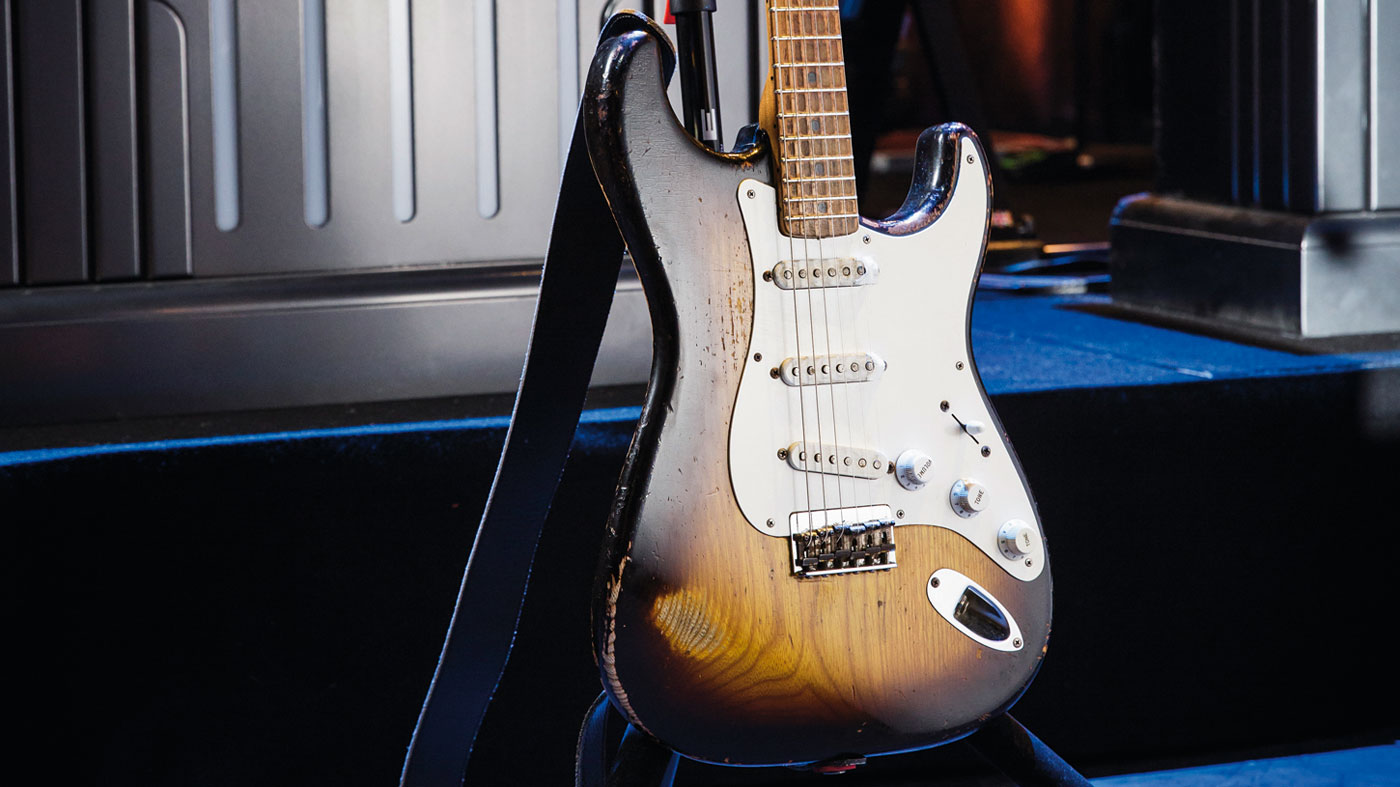
This is just a tribute...
This will be your third live tribute project since 2014. The previous two aren’t precise recreations of old music, so will this also be British Blues Explosion, Bonamassa-style?
I’m lucky enough where I can be a kid again and celebrate the music that made we want to play guitar
“I think we were successful with the Muddy Wolf DVD [Muddy Wolf At Red Rocks, recorded 2014, released 2015], and before you know it, the Three Kings will be out [Three Kings Of Blues] - staying away from the well-worn paths is important.
“Yes, we covered The Thrill Is Gone, Hideaway and Born Under A Bad Sign as an encore, but the bulk of the set was deeper BB, Freddie and Albert tracks; the bulk of the Howlin’ Wolf and Muddy set were deeper tunes.
“And that’s the success because, ultimately, you don’t become a tribute band, but you still pay tribute. I can only do this stuff in the way that I can do it, and I think that adds to the cool factor of it. I’m not trying to pretend I’m somebody else and so, with the summer tour, I’m not gonna try to pretend I’m in any of those guys’ league.
“I’m just lucky enough to have an audience that will follow me on these experimentation things. I’m lucky enough where I can be a kid again and celebrate the music that made we want to play guitar… and still makes we want to play guitar!”
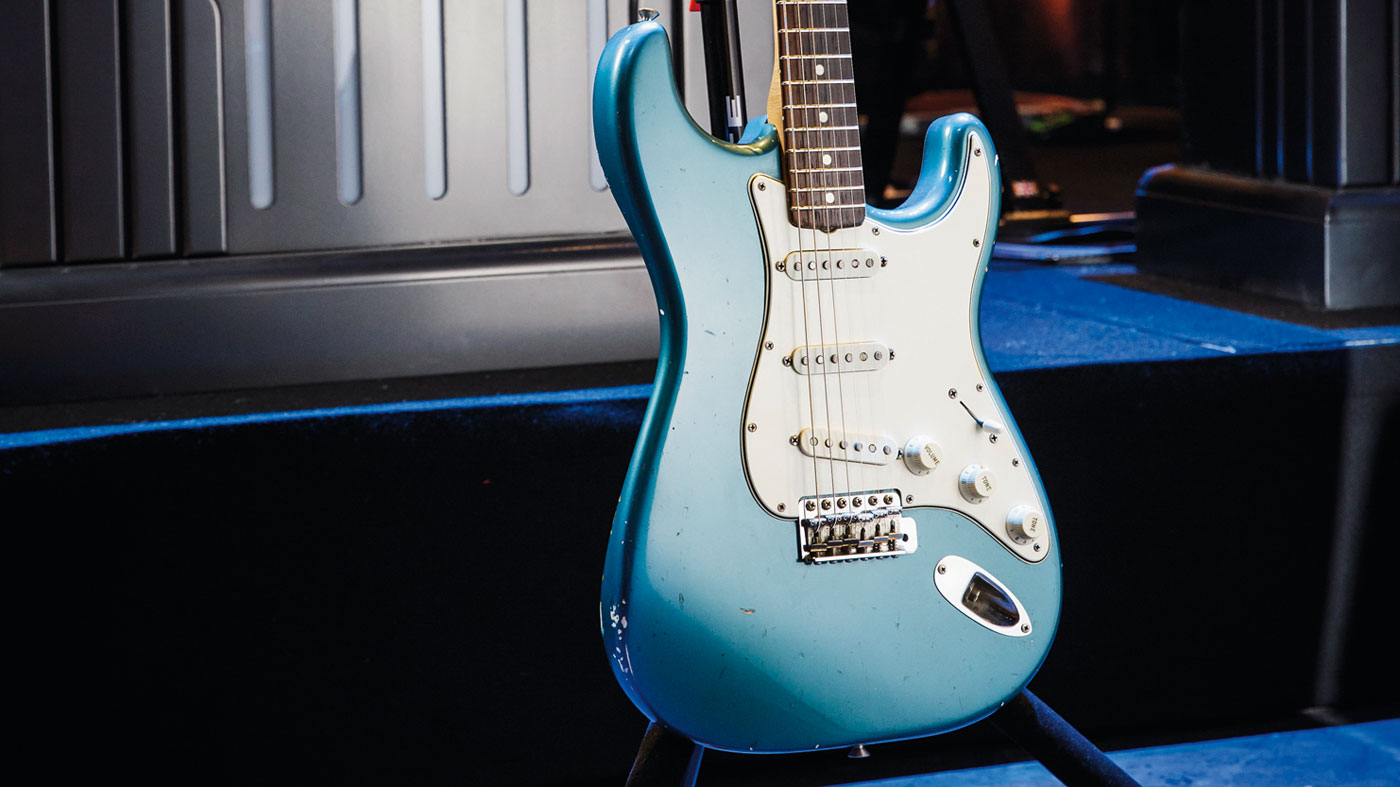
Blues explosion
So, there you are as a young kid in the States with access to all of the great American blues guys. The British Blues Explosion was well over by that point, so what was your access point to that music?
I love those versions of tunes, like I Ain’t Superstitious that The Jeff Beck Group did. Such swagger!
“My father had a great record collection. He was a big fan of John Mayall, The Jeff Beck Group, Clapton, Led Zeppelin… It’s an interesting full circle that the British Blues grabbed me before the American stuff.
“Ultimately, the American stuff kinda took shape and I enjoyed going back and discovering Robert Johnson, but through the gateway of Eric Clapton. Discovering Willie Dixon through the gateway of Jimmy Page, and so on and so forth.
“I love those versions of tunes, like I Ain’t Superstitious that The Jeff Beck Group did. Such swagger! They were making early hard rock records but they were intrinsically blues songs.”

Yardbirds in the hand
The fact that a bunch of British guys helped re-ignite America’s love for blues music is well documented. And, of course, you’re doing plenty to help Brits love the blues again after all these years…
“Yeah and, of course, back then Cream were playing arena rock - in arenas! - when Albert King was playing clubs. Oddly enough, Cream was playing Albert King tunes, but you could go and see Albert play in a club. Isn’t it always the case?
Beck took the Les Paul and it sounded like he just wanted to ram the freakin’ headstock through the front end of the amp!
“Societies tend to eat their own and celebrate the ones that come from afar and I’m a perfect example of that. I come from America, playing British blues and one of the first places that ever embraced me as an artist was the UK. Even though the homegrown talent here is tremendous! It’s a great irony.”
So, if I say to you ‘Clapton’, for example, does your brain go to a certain place with sound and playing?
[Joe fires into a run of Cream-era Clapton-inspired pentatonics on the ’59’s neck pickup.] “Now, he was a classic example of a guy who could plug into a couple of stacks and just… For me, Clapton was always that ‘woman [tone]’ thing; it’s that real creamy sound, even through his Journeyman era and then From The Cradle, and even now when he uses the Strat and the Tweed Twin. Other than the early 1970s around Layla, maybe, it was never strident. It always had this depth to the tone and playing.
“But if you want to talk about Beck, what I hear was ‘angry’. He just had it! He took the Les Paul and it sounded like he just wanted to ram the freakin’ headstock through the front end of the amp! Almost like Pete Townshend - to me, it sounded so angry. And I’ve met him a couple times and he’s a very nice, down-to-earth, humble man. But he is an angry player and it’s a lot of fun to play.
“That angry, hoarse-sounding guitar playing went magically with a very hoarse-sounding Rod Stewart! Mick Waller and Nicky Hopkins, Ronnie Wood on bass - that was a perfect blues-rock band.”

Brit pop
Jimmy Page?
“Page had more of those slurry kind of things, and his sound was always brighter than the other two. Maybe being a Tele player coming out of The Yardbirds, and the early stages of The New Yardbirds - which, of course, became Led Zeppelin - he was playing the Telecaster.
You also have to talk about Alexis Korner, you have to talk about Long John Baldry - all those guys
“Maybe when he got the Les Paul from Joe Walsh, maybe that’s just how he hears it. I think Page is probably the hardest of all for me to copy the sound, with the wacky slurs. In some circles, it’s argued he wasn’t a very accurate player - I disagree, he’s intrinsically very consistent and that’s not a question of accuracy, that’s just how he plays. One of the hardest things to do is copy those idiosyncrasies. So much so, I’m not gonna bother! [laughs]”
And Peter Green, of course - will you do some Greeny stuff?
“I’m sure we will. Most of the classic ’burst tone is discussed as a ’59 Les Paul through a Marshall stack, quote unquote. And in a lot of cases, it is. But if you listen to Oh Well, that was a ‘silverface’ Fender - it sounds like Twins, like Showmans. A Hard Road - the John Mayall record - that sounds more Marshall, it’s more squishy and compressed, but a lot of that Fleetwood Mac when he would really dig in… Marshalls don’t stay that tight.
“And Jeremy Spencer, we mustn’t discount him. Peter was obviously behind it all [in Fleetwood Mac], but Jeremy did a lot of the heavy lifting in that. And then you have to talk about Alexis Korner, you have to talk about Long John Baldry - all those guys.
“I don’t know how deep we’re going to get into those catalogues because most of the songs they did were cover material, Little Red Rooster and all that. But, ultimately, I’d just like to play the music that means the most to me.” [Joe then rips into Steppin’ Out by John Mayall & The Bluesbreakers with Eric Clapton.]
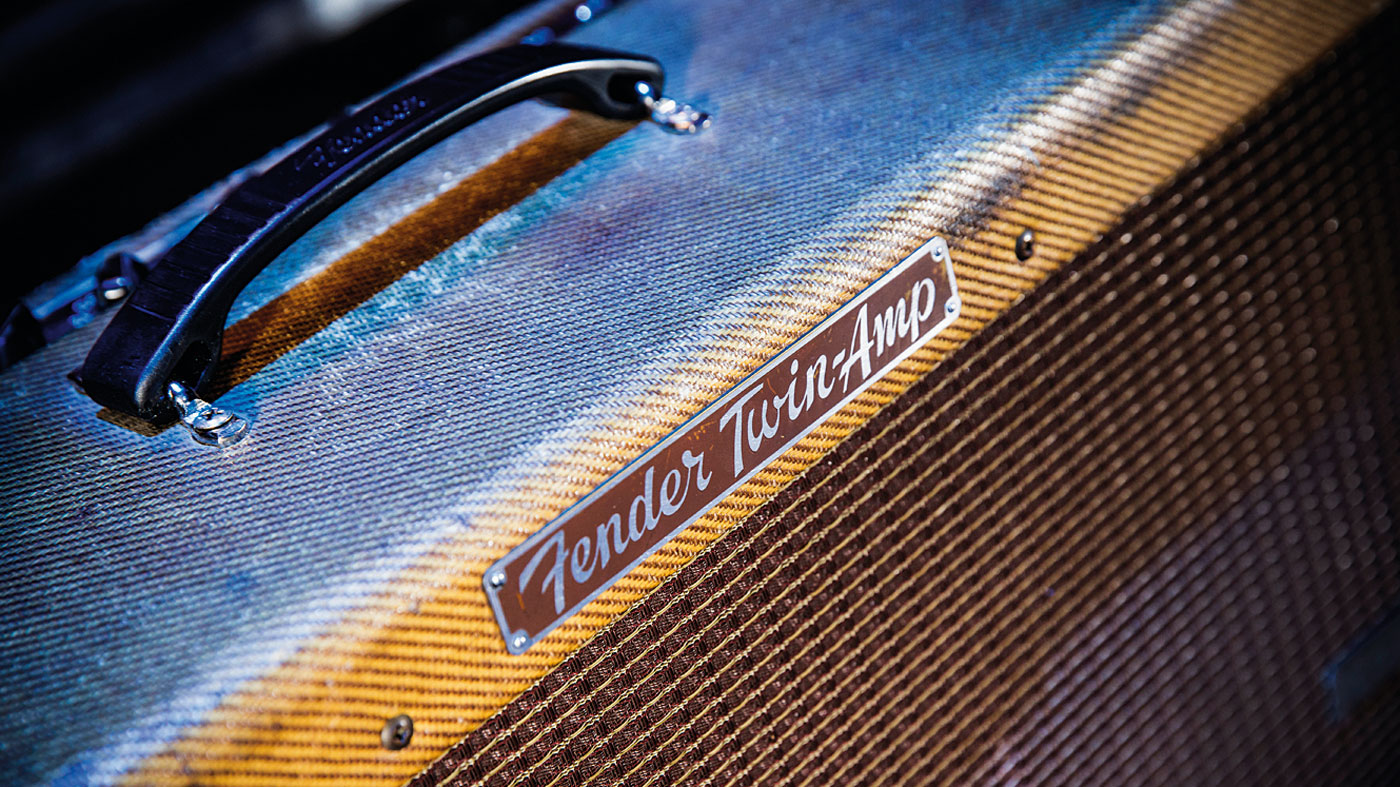
Bluesbreaker tricks
That Les Paul through that Champ in that bathroom… It shouldn’t be, but it’s as good a Bluesbreakers sound as we’ve heard. Have you got any tips?
“If you look at old photographs, engineers in those days would not stick the mic right on the speaker. They’d stick it in and around the amp. If it had two speakers, put it in the middle, so a big part of that Bluesbreakers sound is the room - that’s the sound.
The trick to getting the Bluesbreakers tone is turning down the tone pot, a lot of your top end is there, and this is a huge part of the sound!
“This close-mic’ing nonsense where the engineer has the flashlight looking for the cone… What are you looking for? [laughs] And then, of course, it’s manipulation of the tone control [on the guitar] and Clapton did that a lot.
“The other trick to getting the [Clapton] Bluesbreakers tone is having a loud amp turned up to where you get some overdrive, then turn the [guitar] tone down to around half, or to taste, and back the volume down by around one. Because, on a potentiometer, a lot of your top end is there, and this is a huge part of the sound!
“These get a lot of credit [points to the ’59’s PAF pickups], but I think a big part of the sound - maybe 50 per cent of what these sound like - lies beneath these knobs. So the trick is, take it down by one and it just takes that little 2k thing off. [Joe plays the Bluesbreakers tune again.]
“Also, try using a slightly harder gauge pick and not striking the guitar so hard. The harder you strike the guitar, the more it gets choked and you’re actually getting diminishing returns by hitting harder. So if you use a lighter attack with a heavier pick, it’ll bloom for you. It gets less bright and I think it’s more like what you heard on that record.”
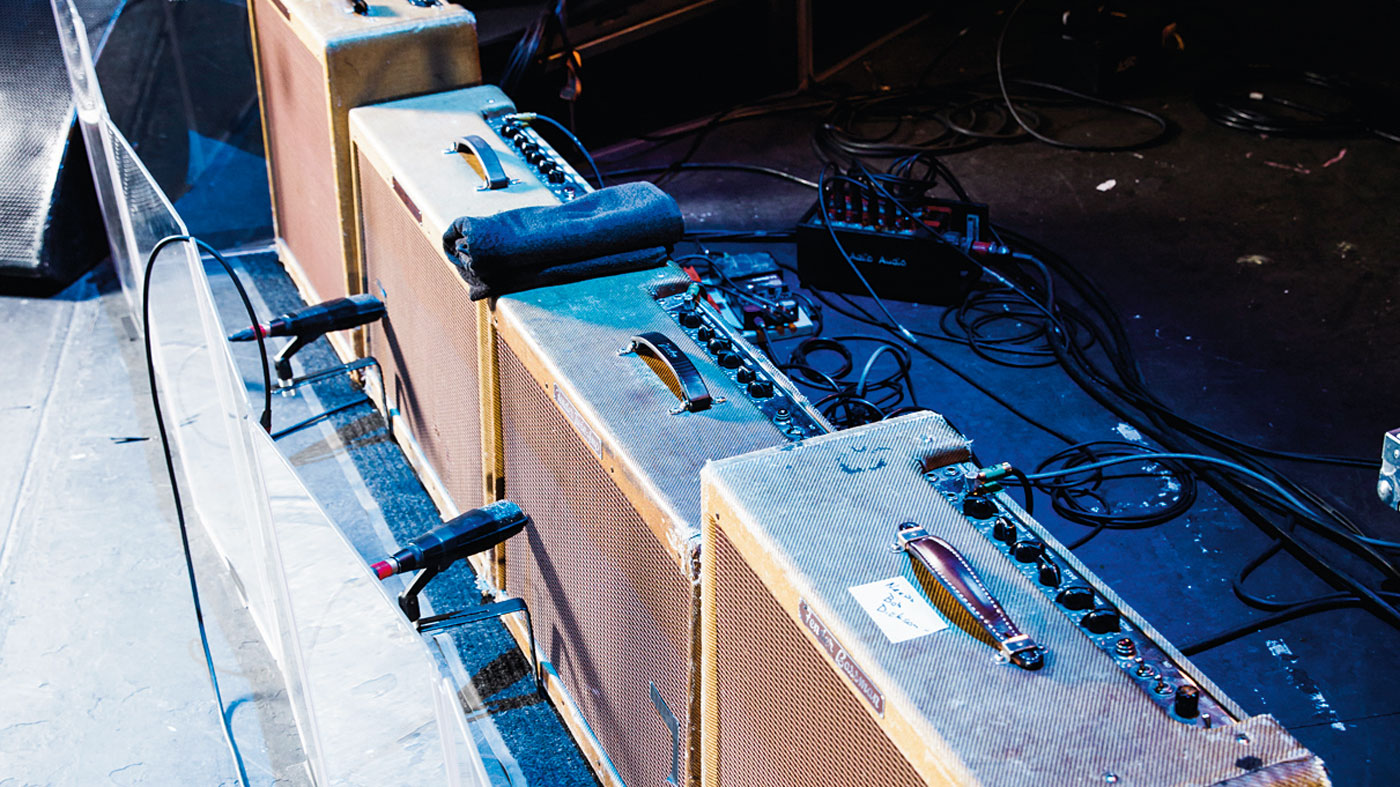
Picking up tips
Wow! That stuff about the pick - it’s counterintuitive, because you associate that sound with so much attack…
You’ve just gotta find a piece of gear that you have a symbiotic relationship with and spend time learning the sounds
“Yeah, but even acoustically you can hear how it chokes, and that’s true of any instrument. My Kryptonite is low headroom on the amp, low volume and too much overdrive and compression. Because all of these techniques that I learned while listening to these records get negated with a low-volume, highly compressed and highly distorted amp because there’s nowhere to go.
“For me, it’s more of an old-school approach. Learning an instrument and knowing what the instrument can do, and it doesn’t have to be a $500k Les Paul! It applies with an Epiphone - you’ve just gotta find a piece of gear that you have a symbiotic relationship with and spend time learning the sounds that will come out of these things. You’ll be absolutely shocked at how many sounds this thing will do.”
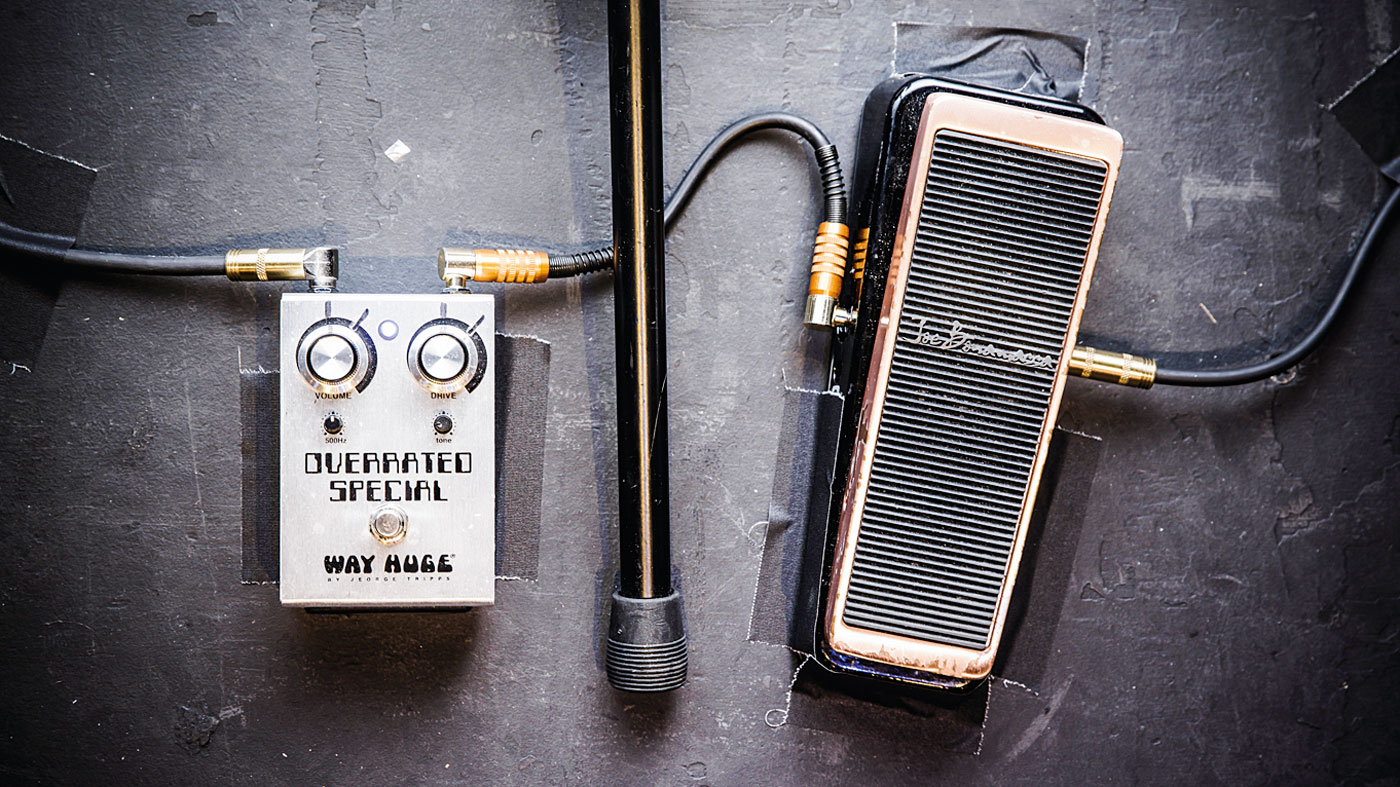
Free chords and the truth
What about Paul Kossoff? He’s obviously a big influence on your playing, so will you come as far forward as him with the British Blues Explosion shows?
The way Kossoff would mute strings inadvertently. I think it was intrinsically in his DNA
“I would hope so. A lot of my vibrato comes from him, and I saw some old pictures of him recently from the studio where he had a Marshall half-stack and a Fender Super Reverb, which made a lot of sense to me. Because the sound that he would get was almost like if [Michael] Bloomfield used Marshalls.
“His chords - that’s the first time I learned those chords. The A chord with the five and the octave on top; he just squeezed the notes out of the thing. Another Kossoff thing I nicked just watching him were his E chords, the way he would mute strings inadvertently. I think it was intrinsically in his DNA. Instead of playing an E chord [Joe sounds all six strings], he’d play an E chord [plays the same chord with the major 3rd muted].
“Now, the second time it’s the same but you eliminate the major 3rd. With your ring finger, you’re muting that G string so it’s nothing but root-five-root-five-root-five. And the power of those chords, in an era before Big Bends Nut Sauce, Snarks and all that, his tuning - between Andy Fraser and Paul Kossoff they were just brilliantly in tune. The bass added the root-five on the lower side. It was this gigantic sound!”

Tele time
Obviously, you’ll play Les Pauls on this run of dates - do you think you’ll bring out a Tele, too?
There’ll be a Tele… there’ll be stuff! No Flying V, though. I don’t think we need a Flying V!
“I don’t think I will, I know I will! I’ve already got the Tele, too. You know me, I’ll have the right stuff - I can’t do it with the wrong stuff. The material will dictate what we’re doing and how we want it to come across. You want it to be authentic, but you want to put your own stamp on it.
“I will say this, my goal is to have at least one Marshall stack with an inverted top cabinet! You gotta do it for the Beck thing [laughs]. But that Tele I’m planning on using is a ’63.
“You could use a maple neck, but the [rosewood ’board] ’63 is preferable for what they were doing back then, as it was an ash body with a non-slab neck. There’ll be a Tele… there’ll be stuff! No Flying V, though. I don’t think we need a Flying V!”
Don't Miss
Eric Clapton's 'Beano' Les Paul is "in US collection", claims Joe Bonamassa
Joe Bonamassa showcases the best of his breathtaking guitar and amp collection

